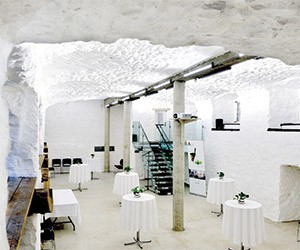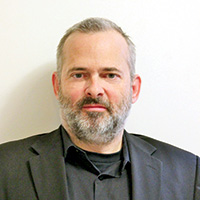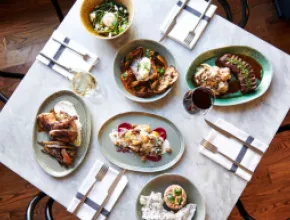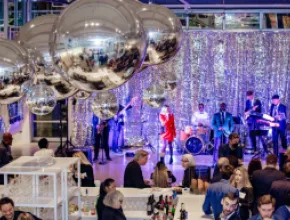In 2008, Quebec City celebrated its 400th anniversary with a full calendar of special events and programs. That milestone year, recognizing the first permanent French settlement in North America, also recognized the future of Quebec’s historic capital, via multimillion-dollar infrastructure projects that included improved access to the St. Lawrence River shoreline, new riverside recreational areas and a historical interpretative center.
Now it’s Montreal’s turn, as Canada’s second-largest city commemorates its 375th birthday with year-long programs and its own set of legacy investments. The party extends to Canada itself, celebrating the 150th anniversary of its confederation this year. In Quebec’s two main cities, where life is a daily celebration, the stage is always set for exceptional group moments.
Montreal
Founded as the missionary colony of Ville-Marie in 1642, Montreal is well underway with the 375-day celebration of its 375th birthday under the banner of “Montreal Comes Alive!”
“Tourisme Montreal is leveraging this important occasion to generate buzz and attract travelers from around the world,” said the bureau’s president and CEO, Yves Lalumiere. “Working with our partners, we’ve made major investments to ensure a great party and an impressive legacy. We’re introducing new hotels, meeting spaces, attractions and festivals, as well as modernizing our infrastructure and putting together a strong visitor welcome strategy to create unforgettable first impressions. Montreal hasn’t been this appealing to travelers and delegates since Expo 67.”
Putting Montreal on the international map 50 years ago, Expo 67, celebrating Canada’s centennial year, set a single-day attendance record for a world’s fair, attracting 569,500 visitors on its third day. Ranked fourth all-time with 50 million-plus visitors over its six-month run (Canada’s population was 20 million at the time), Expo 67’s group-capable legacies include the former U.S. Pavilion, now the Biosphere museum, and former French and Quebec pavilions, today Casino de Montreal.
Officially part of the 375th program, Expo 67 commemorations include a free “Passport” to some 14 events and exhibitions such as Revolution at the Montreal Museum of Fine Arts, which is also presenting an outdoor art showcase themed on the message of peace that inspired Expo 67.
Presented throughout this summer in the Old Port, Montreal Avudo is a dazzling multimedia show of historic images projected through 90-foot jets of water onto 94 stacked shipping containers. Reanimating the past, too, is Cite Memoire, an augmented reality concept featuring historic storytellers projected on buildings throughout Old Montreal.
On May 17, Montreal’s official birthday, the Jacques-Cartier Bridge, an engineering wonder from 1930, became the canvas for Living Connections, a dazzling interactive digital and light show from Montreal’s pioneering multimedia firm Moment Factory and six local partners. Activated by real-time data from sensors measuring the “digital pulse of the city,” the display is scheduled to run for at least 10 years and is among multiple socioeconomic projects designed to “breathe new life into the city.”
Other investments include the Promenade Fleuve-Montagne, a new pedestrian route connecting Pointe-a-Calliere, Montreal’s museum of archaeology and history (introducing a new pavilion for the 375th) to Mount Royal. At Parc Jean-Drapeau, site of Expo 67, plans call for a 65,000-seat year-round natural amphitheater.
Also in the park is La Ronde, an Expo 67 legacy that today is Eastern Canada’s largest amusement park and home of the annual month-long L’International des Feux Loto-Quebec, or Montreal Fireworks Festival. Kicking off its 33rd edition this July with a “hymn to Montreal,” this prestigious international competition is a blast for groups, with wide-ranging options including panoramic VIP seating, venue rental, fine-dining experiences and more.
Quebec City
In a time when rich narratives are reshaping the agenda, Quebec’s fairytale ancient capital offers the consummate storybook.
The luncheon program at the 2017 edition of Destination Canada’s annual Canada Media Marketplace, held this April in New York City, included a video featuring Bruno Gagnon, artistic director of Quebec City-based contemporary circus troupe Flip FabriQue.
The camera followed Gagnon, who founded the company by reuniting his five childhood friends and fellow Quebec Circus School graduates, as he celebrated the defining aspects of his work, including inspiration, creativity and joy. These spring from Quebec City itself, the place Gagnon said “shaped me” and is “most special in summer, when life is at its peak.”
Available for private events, with customizable programs ranging from a five-minute act with one artist to the full 75-minute (or longer) show with all six performers, Flip FabriQue, heralded by The New York Times for “acts that don’t seem humanly possible,” speaks to the festive, magical spirit of this historic city.
Vibrant with its own “living connections” between past and present, Quebec City fortifies the meeting agenda along with the spirit and the soul.
Opened in 1996, the LEED-certified Quebec City Convention Centre offers 38 meeting rooms and just shy of 300,000 square feet of versatile space in the heart of the city.
Surrounded by some 3,500 hotel rooms within a 20-minute walk, including nearly 1,300 just steps away, the venue sits just outside the city’s most alluring address, Old Quebec.
This UNESCO World Heritage Site stands as the only colonial-era city in North America with original fortress walls and defensive works. Amid the numerous ramparts, bastions and gates of the ancient Lower and Upper Towns winds a wonderland of attractions, crowned by the clifftop Fairmont Le Chateau Frontenac. Completing a comprehensive $75 million refresh in 2014, the 611-room gem offers 40,000-plus square feet of space and 23 function rooms for groups of up to 700 people.
Another remarkable Old Quebec treasure is Le Monastere des Augustines. Founded in 1639 by nuns dispatched from France by Louis XIII on a mission of healing, this singular heritage site sits within North America’s first-ever hospital north of Mexico. Relaunched in 2015 as a wellness hotel following a $45 million makeover, the restored cloister offers 33 monastic-style rooms, 32 contemporary rooms, versatile meeting rooms for up to 130 people, wellness programs and more.
Other inspiring venues include the under-discovered Morrin Centre. Managed by the 1824 Literary and Historical Society of Quebec, Canada’s oldest existing learned society, this English-language cultural center features a Victorian library where Charles Dickens once lectured and five unique meeting spaces. Dating to 1750 and rebuilt in 1888, the deconsecrated chapel of the Museum of French America is Canada’s oldest museum and a heavenly choice for events in the former nave and choir areas.
Next month is the 50th anniversary of the Quebec Summer Festival, drawing 1 million-plus revelers to 10 days of concerts, shows and more. In addition, Rendez-Vous 2017 features tall ships from around the world in celebration of Canada’s 150th birthday
More enchantment calls east of the city in the Charlevoix region, where La Malbaie is as idyllic a resort and conference destination as they come. Sweeping up from the St. Lawrence River to the snow-covered slopes of Le Massif and Mont Grand-Fonds, this scenic escape offers everything from whale-watching to gastronomic tours, with another fabled Fairmont property, the 405-room Fairmont Le Manoir Richelieu, among multiple group hotels.







